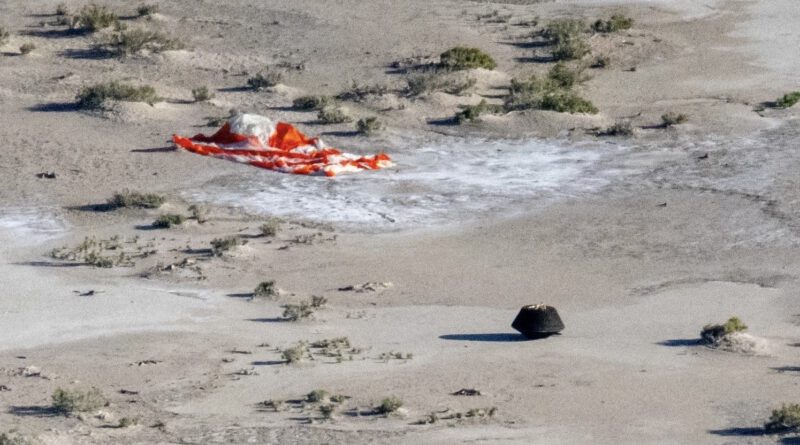How NASA’s asteroid sample survived despite a parachute flop
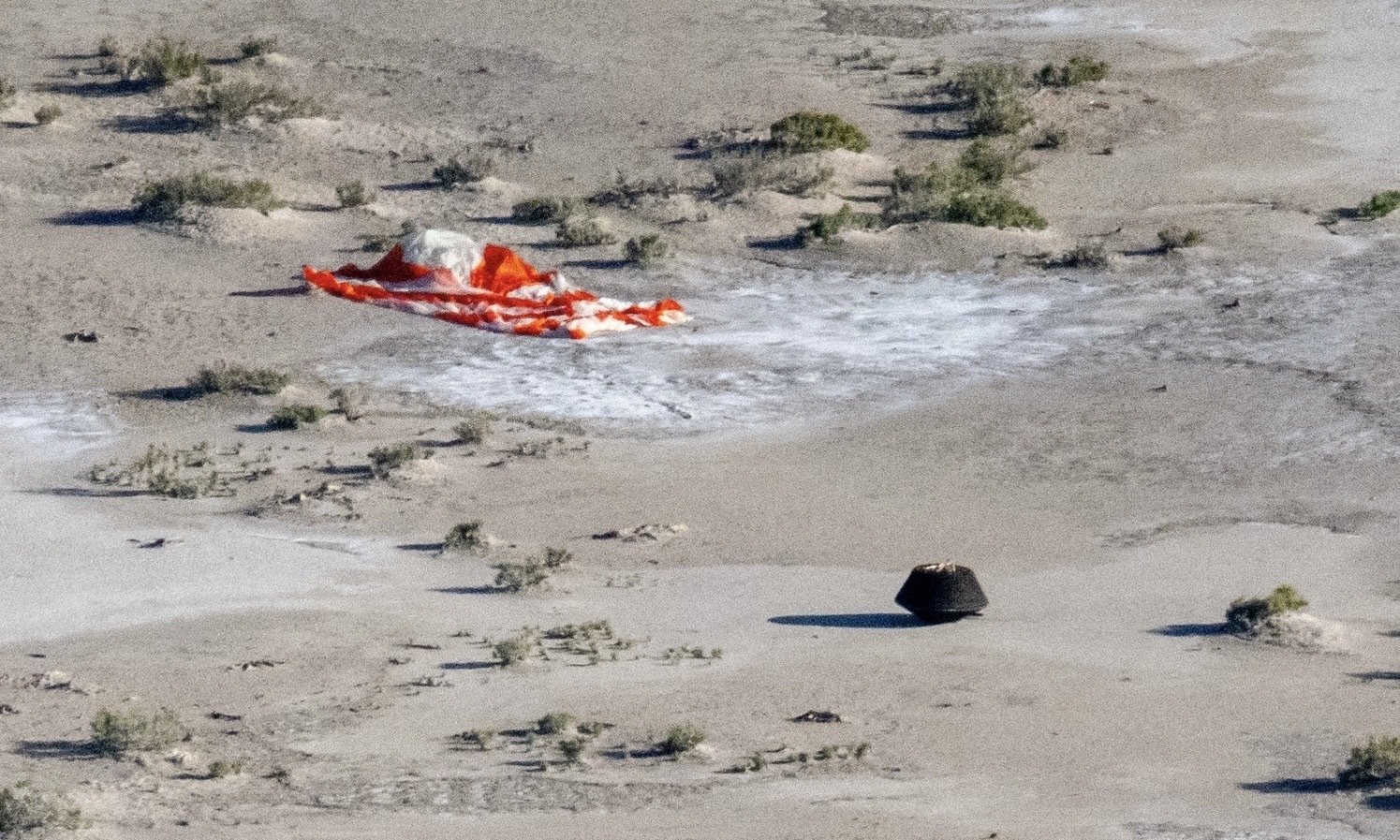
Before NASA recovered a capsule holding bits of space rock from the desert, the landing sequence for the OSIRIS-Rex mission seemed flawless.
The space agency plucked the nose-down pod from the Utah Test and Training Range, an enormous military base southwest of Salt Lake City, shortly after it arrived on Sept. 24. The capsule didn’t roll or bounce — just made a tiny little divot in the dirt that had been softened by rain the week before.
That was a fortunate ending for the seven-year, 4 billion-mile journey to asteroid Bennu and back: A key parachute called a drogue did not open as NASA had planned. Dante Lauretta, the team’s principal scientist who nervously waited in a nearby helicopter at the time, cried when he finally heard confirmation the main parachute opened.
“That was the moment I knew we made it home,” he said.
A little over two months since the successful return of the OSIRIS-Rex mission capsule — short for Origins, Spectral Interpretation, Resource Identification, and Security Regolith Explorer — the team has some answers for why the drogue, designed to slow the capsule down during its rapid descent to Earth, did not deploy when expected.
About four hours before the landing, flight controllers commanded the spacecraft to drop the capsule while it was still 63,000 miles above the planet — over a quarter the distance from Earth to the moon. Meanwhile, they were aiming for a target of only 250 square miles on the ground. NASA and the University of Arizona, which led the mission, likened the challenge to throwing a ball over 10 football fields and landing it perfectly in the farthest end zone.
At its highest speed, the capsule, protected by a heat shield, traveled 27,650 mph, engulfed in a fireball. The drogue was supposed to deploy at an altitude of about 100,000 feet.
That didn’t happen.
Instead, when the capsule reached 100,000 feet, a signal triggered the parachute system to cut the drogue line — while it was still stowed in the capsule. As the capsule continued to plunge, free-falling at breakneck speed, the drogue eventually deployed at about 9,000 feet above the ground. But because the drogue line had already been severed, the chute just separated.
Despite that error, the main parachute opened as expected at an altitude of 10,000 feet. Because of its robust design, the parachute was able to stabilize the capsule for a soft landing, albeit touching down about a minute earlier than planned, according to NASA.
So what went wrong?
Why the OSIRIS-Rex drogue parachute didn’t deploy
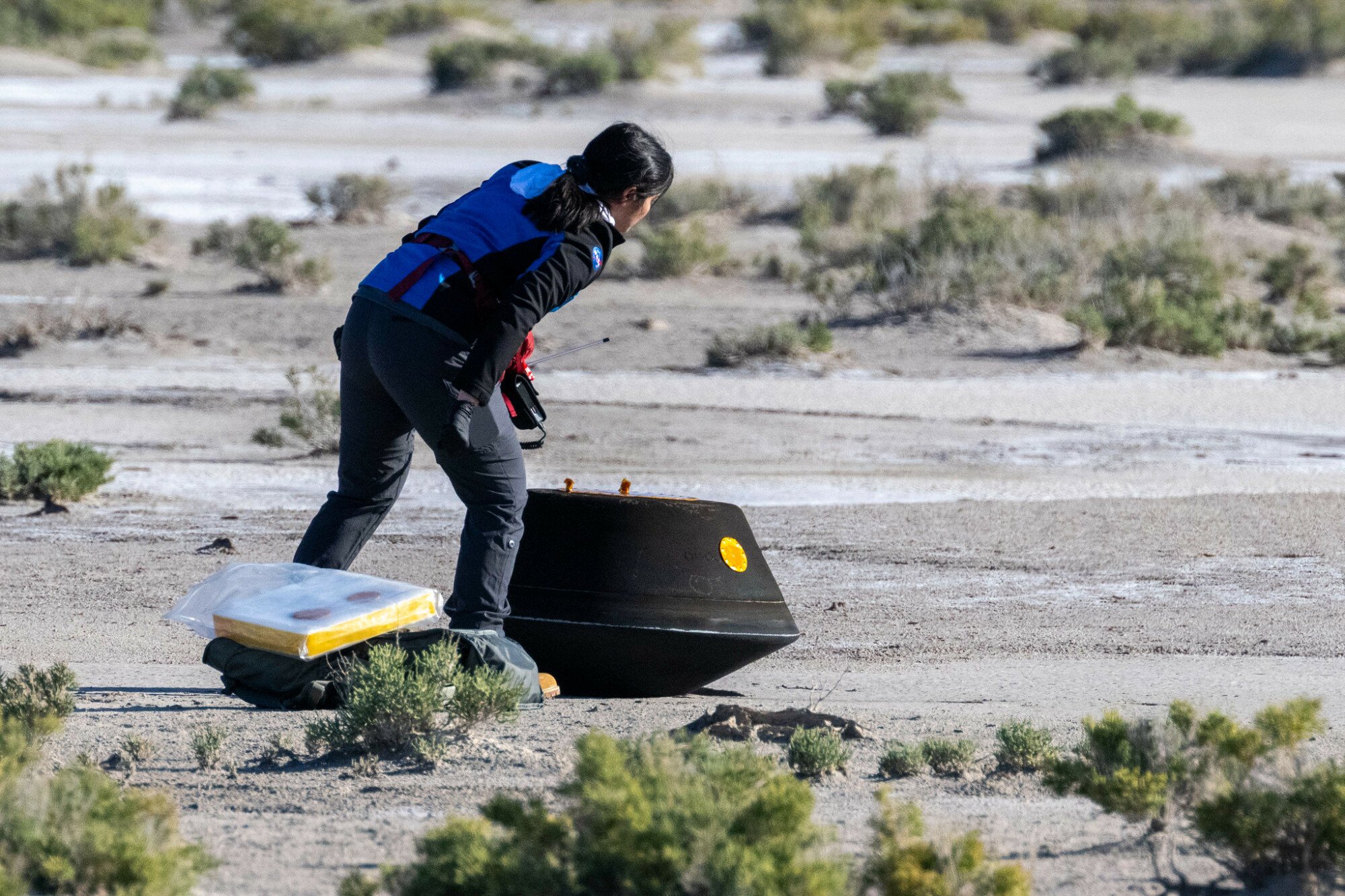
In short, some miswiring may have been the culprit that caused the chutes to fire out of order, according to NASA after reviewing the landing video and documentation. The design manual included some confusing instructions, using the word “main” inconsistently for the device that sends the triggering electrical signals and the device that receives the signals.
“On the signal side, ‘main’ meant the main parachute,” according to NASA. “In contrast, on the receiver side, ‘main’ was used as a reference to a pyrotechnic that fires to release the parachute canister cover and deploy the drogue.”
When engineers connected the two “mains,” that could have caused the parachute deployment to happen out of order.
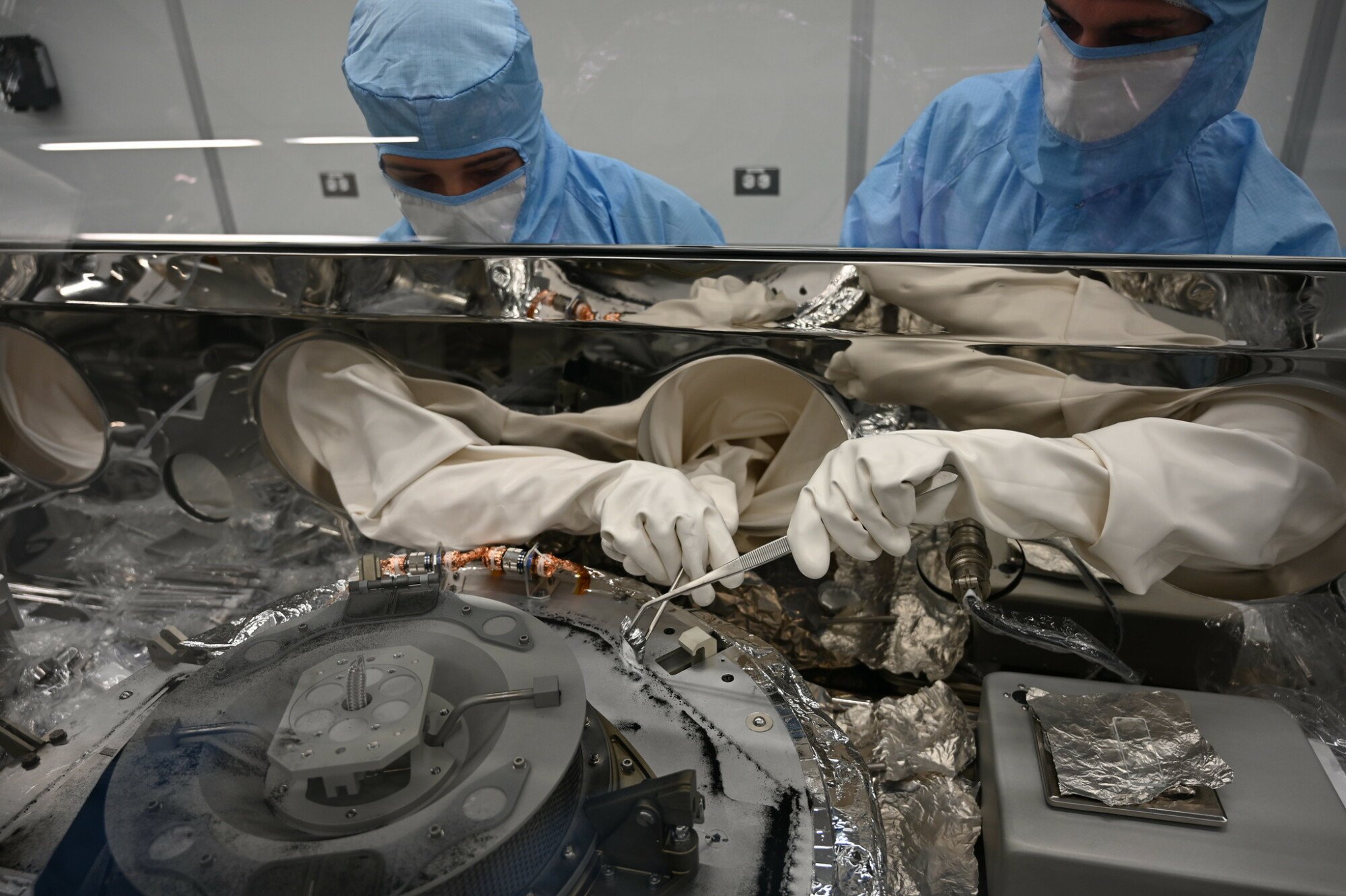
Want more science and tech news delivered straight to your inbox? Sign up for Mashable’s Top Stories newsletter today.
NASA will confirm this by testing the system responsible for the parachutes. The mishap investigation is a critical procedure for the agency, preventing any avoidable mistakes from happening in the future.
The test can’t happen right away, though, as the space agency doesn’t have access to the hardware. Right now, it’s in a clean room glove box at NASA’s Johnson Space Center in Houston. Once scientists are done processing the asteroid sample, engineers will be able to retrieve it.
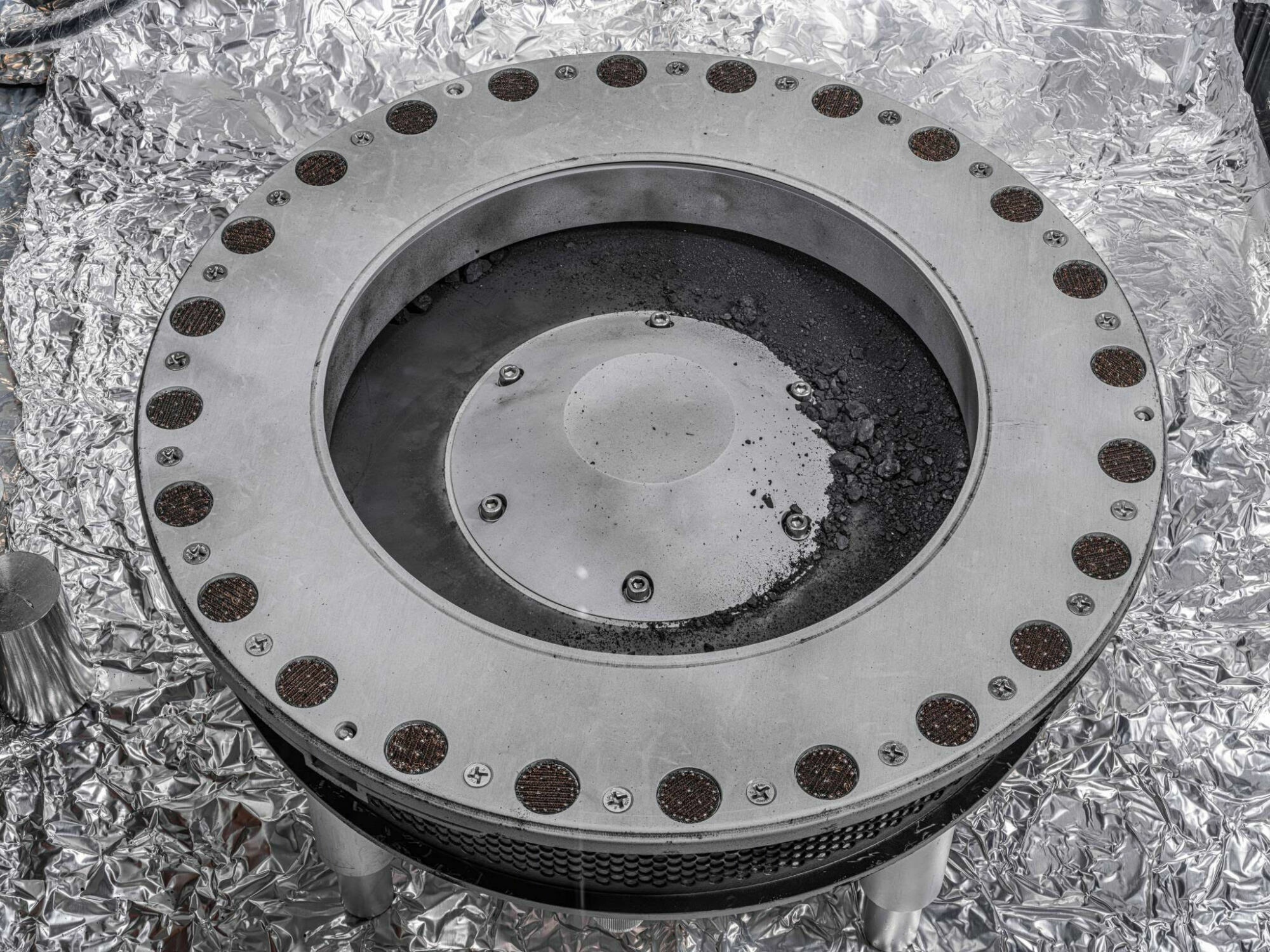
Why NASA can’t open the OSIRIS-Rex sample canister
But that may take a while. The team has had trouble opening the canister containing the bulk of the rock and dust sample. In the meantime, scientists have swept up some of the material that leaked into the external container for analysis, more than 60 grams’ worth, which exceeded the agency’s goal. Some of those bits have been shipped off to different institutions for research already.
In an October update, NASA officials explained that the top of the canister, which has been previously estimated to hold perhaps a half-pound or a cup’s worth of rubble, is jammed shut. Two out of 35 fasteners are stuck, and the tools within the contamination-free glovebox have not been able to pry them open.
Now the team is working on new strategies to get the material out.
“The tools for any proposed solution to extract the remaining material from the head must be able to fit inside the glovebox and not compromise the scientific integrity of the collection,” according to NASA, “and any procedures must be consistent with the clean room’s standards.”
